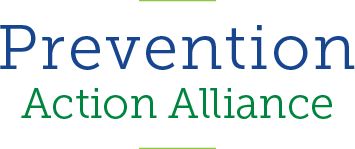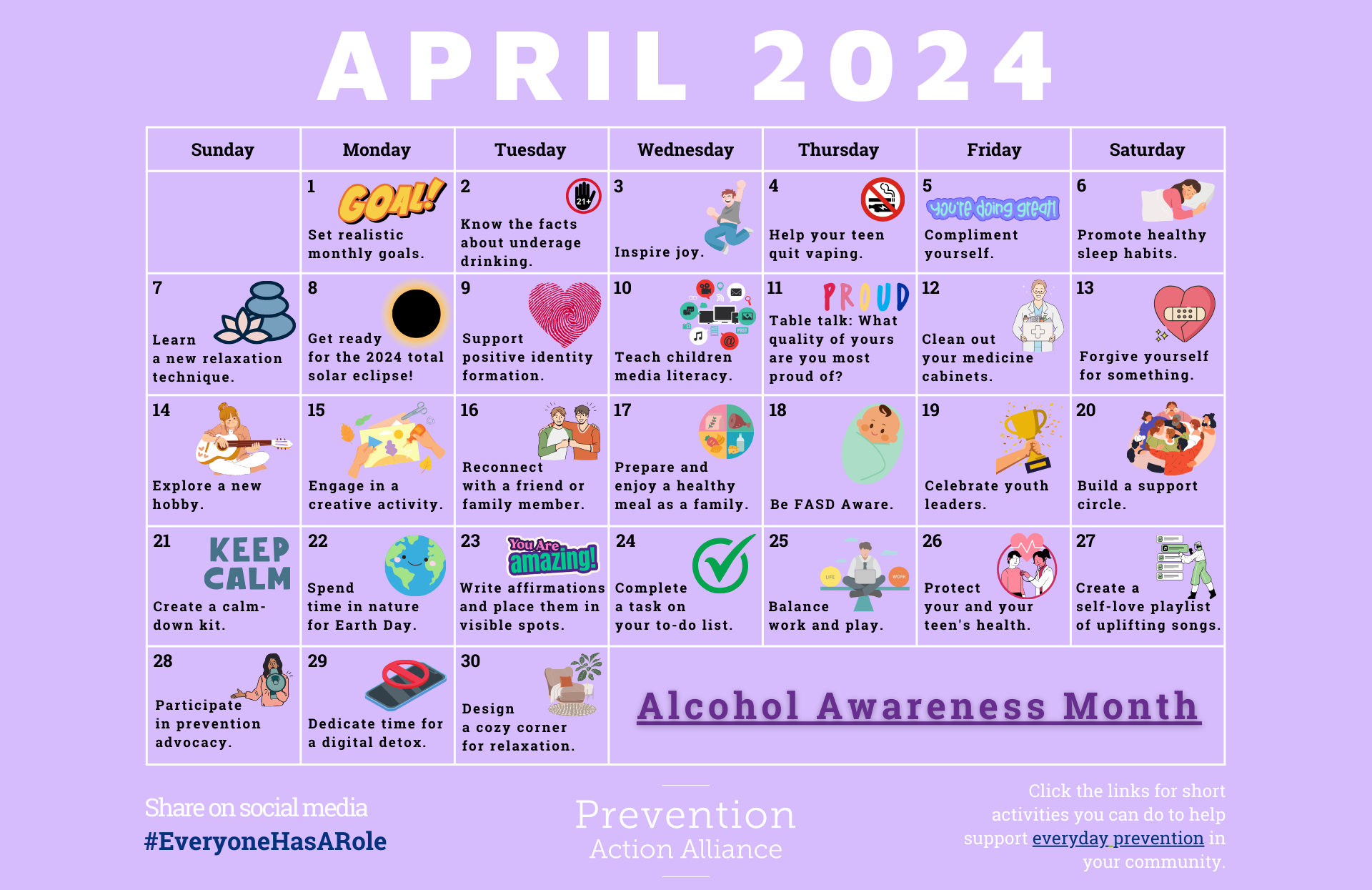Our Priorities

While each community is different and has unique prevention needs, we’ve found that some issues crop up again and again, and we’ve found that some issues are truly felt in every corner of the state. On this page, we’ve listed those prevention priorities and included ways that state leaders can play their role in prevention by addressing these priorities. If you’d like to lend your voice to improving the lives of others, here are our priorities for prevention advocacy. Our priorities for prevention are:
- Prevention Education and Consultation
- Reducing youth access to substances
- Creating and supporting healthy communities
- Supporting health equity
- Increased and sustained prevention funding
- Increase in Mental Health Education and Promotion Across the Lifespan
 Prevention helps people develop the knowledge, attitudes, and skills needed to make good choices and promote positive behaviors. Ohio communities continue to be impacted by addiction crises and mental health issues. To effectively address and prevent these issues, we must recognize prevention as an essential part of the continuum of care and invest in critical prevention services. Prevention Action Alliance and other prevention professionals are subject matter experts equipped to provide research and education to support policies that establish safe, healthy, and thriving communities.
Prevention helps people develop the knowledge, attitudes, and skills needed to make good choices and promote positive behaviors. Ohio communities continue to be impacted by addiction crises and mental health issues. To effectively address and prevent these issues, we must recognize prevention as an essential part of the continuum of care and invest in critical prevention services. Prevention Action Alliance and other prevention professionals are subject matter experts equipped to provide research and education to support policies that establish safe, healthy, and thriving communities.
Lawmakers and regulators should ensure that prevention professionals and other key stakeholders are consulted when discussing bills or rules affecting the delivery of prevention services.
 During adolescence, the brain is in a critical stage of growth, and using drugs before it’s finished developing can disrupt that growth. Even though drug use can be so harmful to teenagers, they’re also in a state of transition when drug use might be more likely to occur. Teenagers are sometimes faced with peer pressure, an increase in the availability of drugs, and the stressors involved in school and social life. At the same time, the parts of their brains that control decision-making haven’t fully developed, so they may not be able to assess the risks of drug use.
During adolescence, the brain is in a critical stage of growth, and using drugs before it’s finished developing can disrupt that growth. Even though drug use can be so harmful to teenagers, they’re also in a state of transition when drug use might be more likely to occur. Teenagers are sometimes faced with peer pressure, an increase in the availability of drugs, and the stressors involved in school and social life. At the same time, the parts of their brains that control decision-making haven’t fully developed, so they may not be able to assess the risks of drug use.
Reducing the ability of youth to secure alcohol, tobacco, and other drugs is an effective prevention strategy. By creating programs that reduce this access, we can prevent or delay the onset of drug use. In turn, this will promote health and wellness among young people.
 Effective prevention cannot be done in a top-down, one-size-fits-all approach. It has to be done with respect to each individual community’s needs, readiness, and cultural norms. To that end, a bottom-up, community-by-community approach to prevention is best tailored to meeting each community’s specific needs. State policymakers can support this best practice approach by making funds and programs available to create new community programs, organizations, and initiatives and expanding existing prevention strategies.
Effective prevention cannot be done in a top-down, one-size-fits-all approach. It has to be done with respect to each individual community’s needs, readiness, and cultural norms. To that end, a bottom-up, community-by-community approach to prevention is best tailored to meeting each community’s specific needs. State policymakers can support this best practice approach by making funds and programs available to create new community programs, organizations, and initiatives and expanding existing prevention strategies.
To ensure effective prevention, policies and programs should build local capacity to solve local problems. By working with communities and fostering dialogue, state leaders can support prevention in all of Ohio’s communities.
 Everyone has a role in prevention, and all communities deserve to have access to prevention services. The reality, however, is that communities with wealth are more likely to have prevention services for their families, and those communities with the least assets are most likely to not have those resources and investments in the health of their families.
Everyone has a role in prevention, and all communities deserve to have access to prevention services. The reality, however, is that communities with wealth are more likely to have prevention services for their families, and those communities with the least assets are most likely to not have those resources and investments in the health of their families.
Policies and practices in prevention must address disparities in behavioral health. Lawmakers, communities, families, preventionists, and others have to pitch in to address the vast inequities that exist.
 Funding for prevention is typically ad hoc, yet the need for prevention services is continual and sustained. Spending should be tied to building capacity for prevention by creating a pipeline of credentialed preventionists, supporting those preventionists with resources and strategies, and making funds available for programs that create systemic change. Instead, funds are often tied to single substances or single programs and then reapportioned to other programs in a year or two.
Funding for prevention is typically ad hoc, yet the need for prevention services is continual and sustained. Spending should be tied to building capacity for prevention by creating a pipeline of credentialed preventionists, supporting those preventionists with resources and strategies, and making funds available for programs that create systemic change. Instead, funds are often tied to single substances or single programs and then reapportioned to other programs in a year or two.
State policymakers should work collaboratively with prevention professionals to prioritize funding for proactive prevention strategies that meet the needs of all Ohioans.
 Mental health education and promotion is important across the entire lifespan. Effective mental health promotion enhances the structures and supports that enable people of all ages to live safe, productive, and fulfilling lives and to develop coping strategies for life’s challenges. It is fundamental to the mental health of whole communities as well as their individual members and enhances opportunities for effective prevention and early intervention. A mentally healthy community supports and nurtures individuals and families through empowering people to develop the environments that promote subjective wellbeing, optimal development, the use of skills, and the achievement of individual and collective goals.
Mental health education and promotion is important across the entire lifespan. Effective mental health promotion enhances the structures and supports that enable people of all ages to live safe, productive, and fulfilling lives and to develop coping strategies for life’s challenges. It is fundamental to the mental health of whole communities as well as their individual members and enhances opportunities for effective prevention and early intervention. A mentally healthy community supports and nurtures individuals and families through empowering people to develop the environments that promote subjective wellbeing, optimal development, the use of skills, and the achievement of individual and collective goals.
State policymakers should consider the needs of Ohioans across the lifespan. For example, plan for the whole child in education and provide resources for schools to teach mental health education. At the same time, schools should rely on evidence-based programs and use certified professionals that are proven to work in teaching young people about their mental health. Similar consideration should be given to young children, adolescents, young adults, and older adults. Each age and stage has its own development challenges and tasks as well as opportunities for prevention and promotion, assessment and early intervention and referral to appropriate resources will support a healthy Ohio. Prevention Action Alliance and other prevention professionals are subject matter experts equipped to provide research and education to support policies that establish safe, healthy, and thriving communities.


